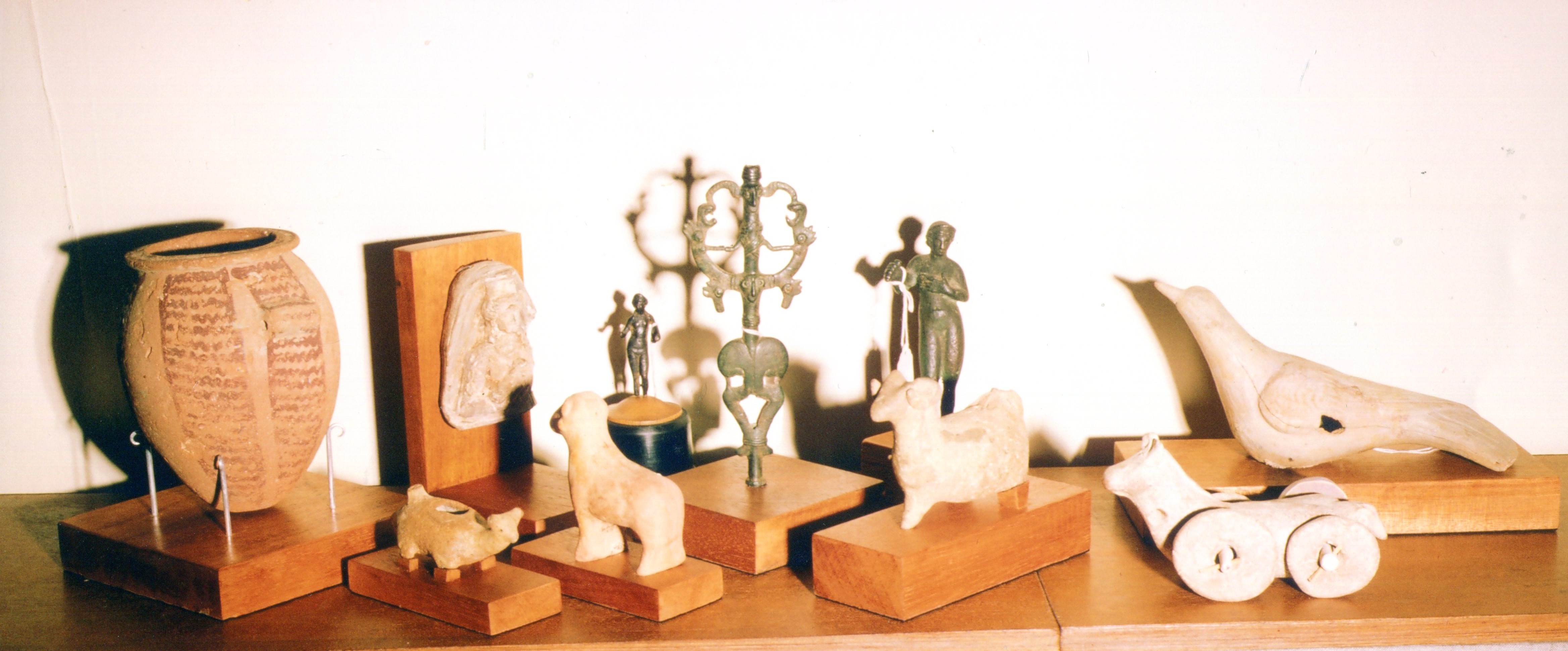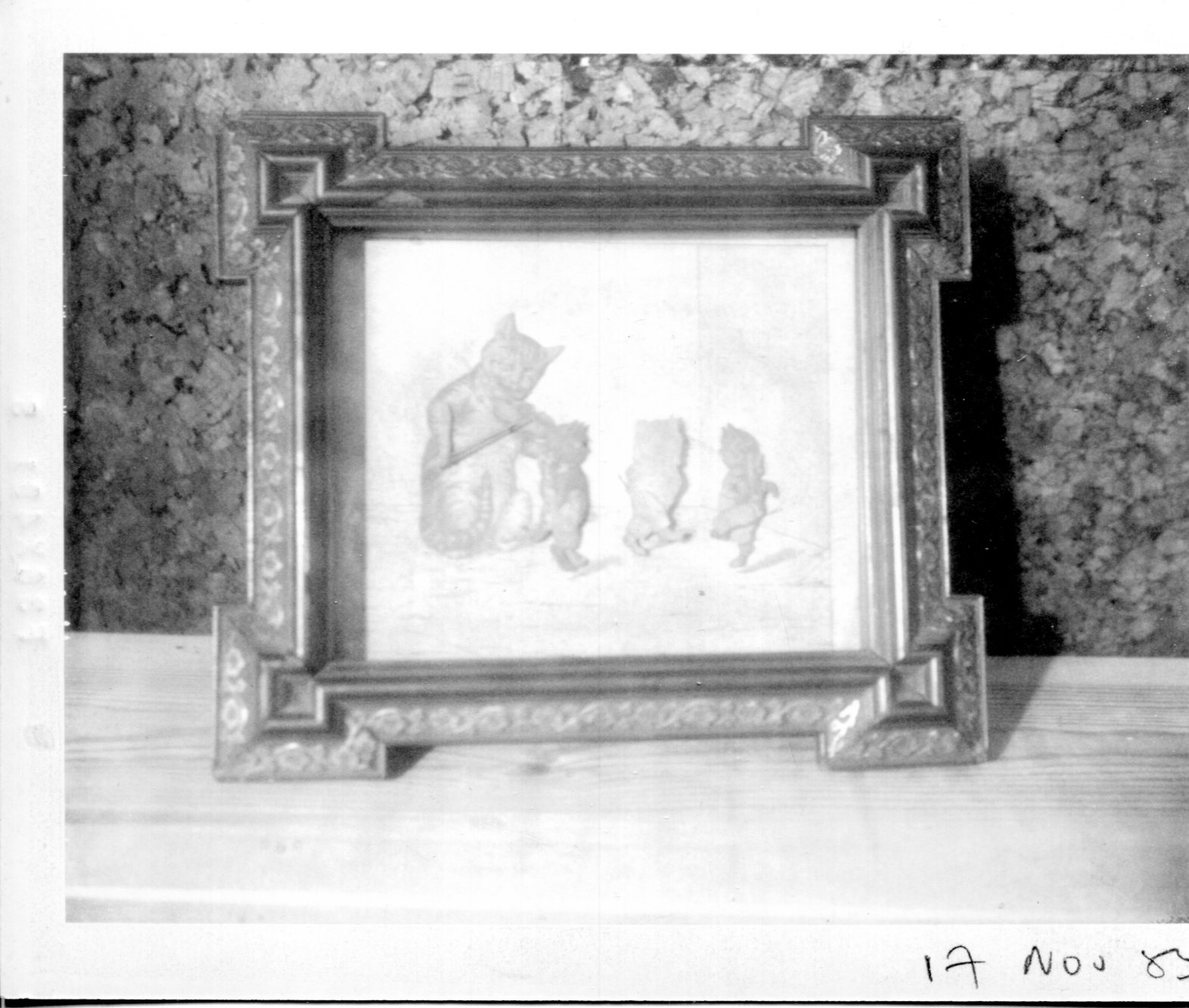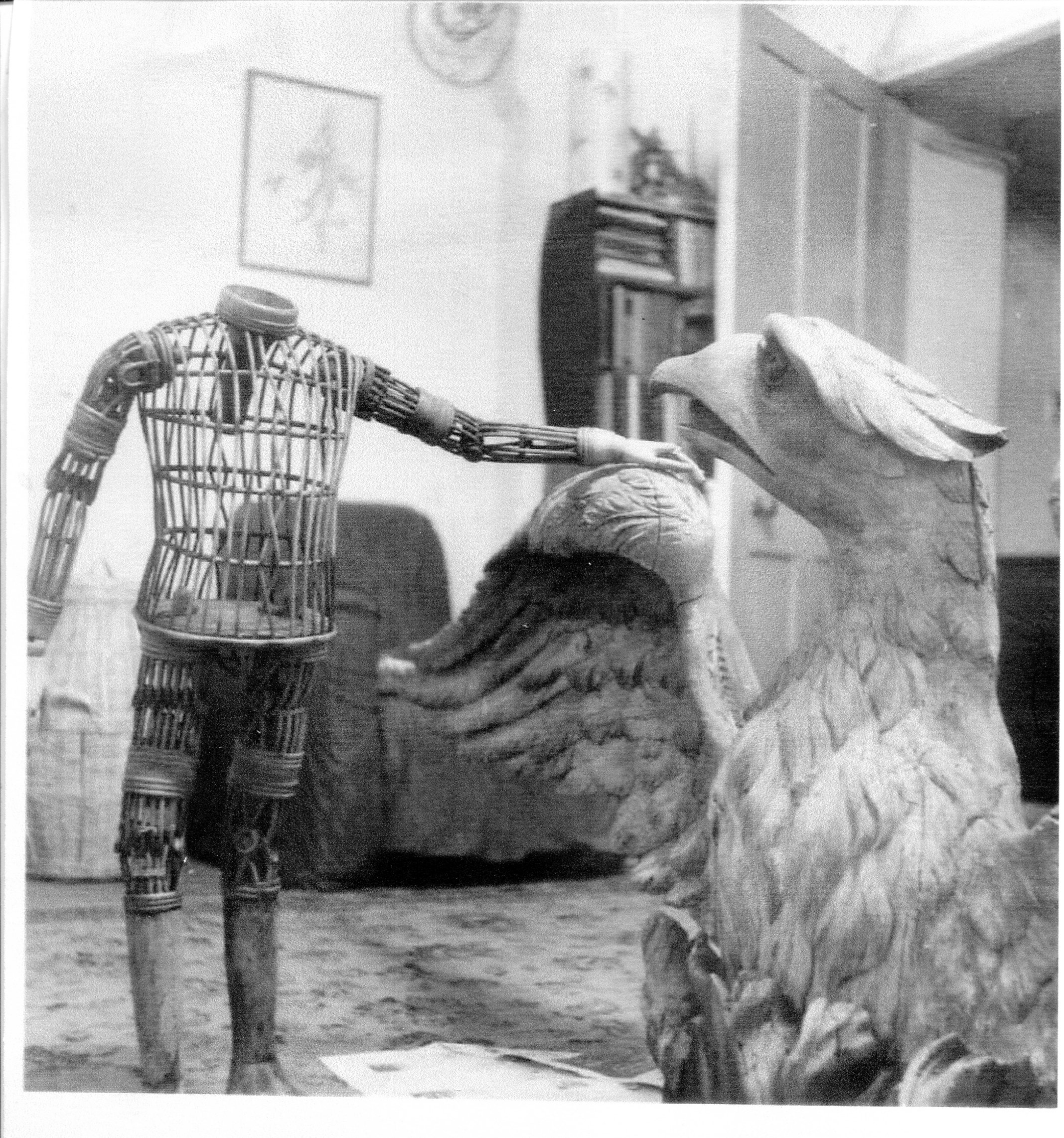ABOUT MEG RUTHERFORD'S REPAIRS AND RESTORATION
In Meg Rutherford's early days after graduating and before she was known, sculpture produced slow and uncertain financial returns. In the 1960s to generate regular income, Meg also repaired and restored antiques and collectables for London dealers which demonstrated her great ability at craft work of one sort or another.
The principal clients in the early 1960s were DODO in Westbourne Park Road, Geoffrey Van, occasionally Chris Snow and then later in the decade for Phillips and Page and for Gordon Savage in Kensington Church Street. Meg made repairs to Winchester Cathedral's Altar Nativity Group. This was early in 1961.
Her notes show that she undertook hundreds of commissions of all sorts, requiring skill in a variety of materials and solving numerous problems. These ranged from small objects, for example Coquille Nuts to very large items, such as a much larger than life size wooden eagle.
Meg also mended a succession of Japanese wooden automation Kobe Dolls, some of which presented quite a challenge with the need to restring all the moving parts. In a very different material Meg replaced the missing glass leaf of a large glass tomato from Venice.
The notes for the first item in her second notebook read as follows. Chinouserie Screen. Gouache on tooled silver and gold, feather screen 17th/18th century. 6 panels 8 feet high, condition very bad. Severe tears end panels, less inside, all panels had to be removed – 92 pins per panel, just for edging. There were more before panels could be lifted. Secured tears with Masking Tape, stuck denim patches with Resin W, then backed whole panel with denim/resin and stretched it into position with Gimp Pins, gluing down outer edge. Replaced a little edging with some from back, put new leather there, then painted to conceal tears. That took 39 hours.
Her next entry shows that Phillips and Page on 2 June 1967 delivered no less than twelve small items for repair; These included removing the mount from a piece of the Acroplis and repairing a very smashed up wax bust. Another task involved making a new head for a cane figure. Meg made it too small, so she hard to start again. She now had a head without a body, which is how the articulated figure she called Ingmar George came about.
Rather different, Meg mounted, mainly on wood, a large number of small antiques, mostly from lost civilisations, to make then suitable for display. Once Meg got into illustrating, her repair work more or less ceased, though she did accept the occasional item.




